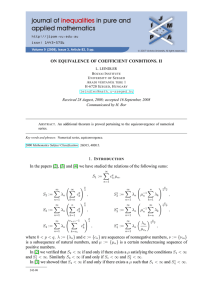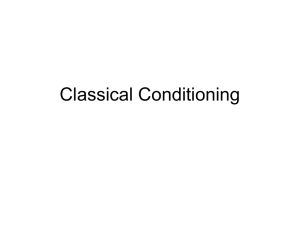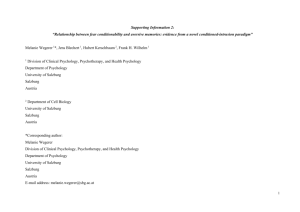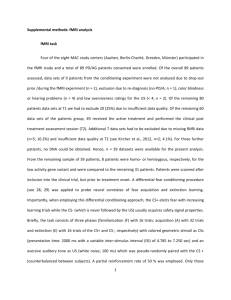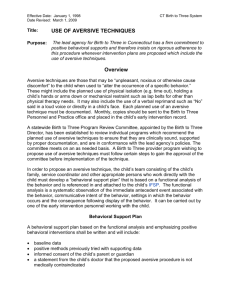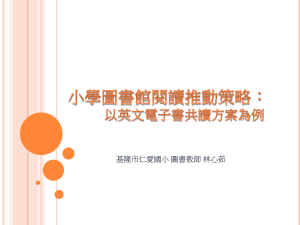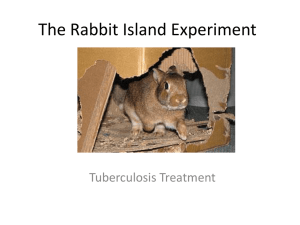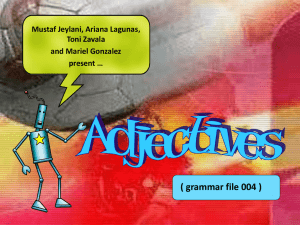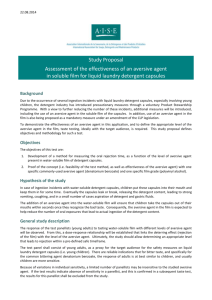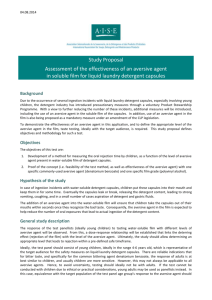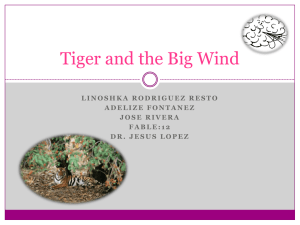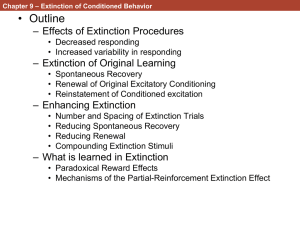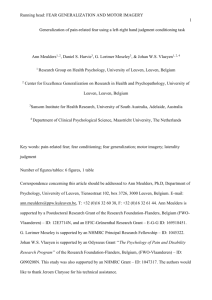Behavior Therapy Tecniques
advertisement
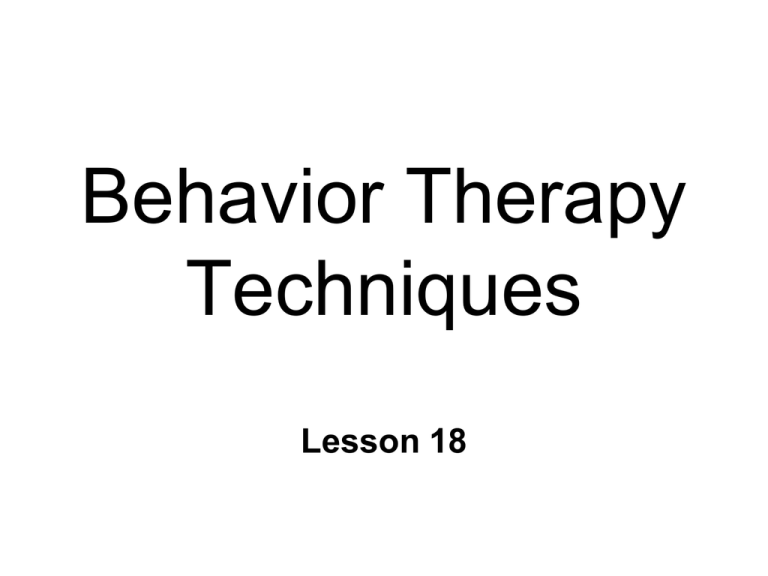
Behavior Therapy Techniques Lesson 18 Behavior Therapy Behavior Modification 1. Clarifying the clients problem 1. Goal setting 2. Formulating initial goals for therapy 2. Behavioral Definitions 3. Designing a target behavior 4. Identifying the maintaining conditions 3. Functional Analysis 4. Objective measurement 5. Designing a treatment plan 5. Data collection 6. Implementing the treatment plan 6. Evaluation ~ 7. Evaluating the success of treatment 8. Conducting follow-up assessment ~ Changing Behavior Acceleration Target Behaviors Increase behavioral deficits Primarily positive reinforcement Deceleration Target Behaviors Punishment behavior “Dead” person rule Include acceleration behaviors ~ Deceleration Techniques Differential RFT (DRO & DRI) Direct Deceleration Therapy Consequential deceleration Aversion therapy Token Economies Pos RFT & response cost Exposure therapies Brief / graduated Prolonged / intense ~ Counter-Conditioning: Joseph Wolpe Reciprocal inhibition Buzzer sounded when cat was eating Buzzer (CS) : eating (US) pos CER Buzzer (CS) : shock (US) fear Substitution of competing responses Respondent Learning Can also replace fear with pos CER ~ Mary Cover Jones & “Peter” Treatment of phobias Peter fearful of white rabbit Counterconditioning Pairing favorite food & rabbit Exposure therapy Gradually moved rabbit closer Peter watched another child play with rabbit ~ Inhibitory learning Conditioned Inhibition Learning to withhold conditional response CS-: US will not occur no US for period of time US must be a significant event Occurs only if there is an excitatory context ~ Standard Procedure Some trials: CS+ --- US Other trials: CS+ / CS- --- No US Example: traffic light CS+ (red) CR? CS- (police officer) / CS+ CR? Respond differently under different circumstances ~ Negative CS-US Contingency Similar to standard procedure Some trials: CS+ & US Other trials: CS- & no US CS- no response Example: Traffic light Red (CS+) – Danger (US) Green (CS-) – no Danger (no US) ~ Inhibitory Conditioning & Stress Panic attacks extreme stress Carter, Hollon, Carson, & Shelton (1995) triggered by CS+ for aversive stimuli Panic attack experimentally induced accompanied by trusted friend or alone ~ Friend acted as CS- for stress stress compared the alone group trusted friend was a safety signal ~ Exposure Therapies For fear/anxiety & other negative CERs Intense, maladaptive, or inappropriate Some strong fears adaptive Based on Extinction Fear-provoking events (CS+) Safe environment (no US) ~ Exposure Therapies Models Brief/graduated exposure therapy Short exposure periods Gradually increase intensity of CS Prolonged/intense Lengthy exposure periods Immediate exposure to intense CS Mode of exposure on continuum Imaginal ---------------------- in vivo ~ Systematic Desensitization Brief/Graduated Exposure Therapy Relaxation Training Tense then relax muscle groups Fear Hierarchy Rank fear-provoking situations Graded Pairing CS for fear with muscle relaxation Thru hierarchy: lowest highest ~ Systematic Desensitization: Theoretical Explanations Counterconditioning Substitution of competing response Reciprocal inhibition Neurophysiological processes Parasympathetic vs Sympathetic Extinction Cues present but no danger (US) ~ Flooding Prolonged/Intense Exposure Therapy Also called implosive therapy In vivo or imaginal Treatment for Phobias Obsessive-compulsive disorder Post-traumatic stress disorder Agoraphobia ~ Flooding Aversive CS escape/avoidance Limits opportunity for extinction Confront individual w/ fearprovoking situations/ images No relaxation Not graded Extinction process Potential for intensifying fear ~ Aversive Therapy Punishment of target behaviors Instrumental conditioning Raversive stimulus E.g., chronic vomiting shock Problems Avoidance of therapy (drop out) Disruptive CERs punishment of others Ethics concerns ~ “More Acceptable” Punishers Punisher Target Behavior Trichotillomania (Pulling out hair) Compulsive eating Nail biting Face slapping Bruxism Biting other children Snap rubber band on wrist Cigarette smoke Bitter substance Water mist sprayed in face Loud noise Mild mouthwash Aversive Therapy: Covert Sensitization Classical & instrumental conditioning Use of imaging Therapist describes behavior & aversive outcome Advantages Safe & more acceptable to clients Clients can self-administer in vivo Effectiveness equivocal ~
